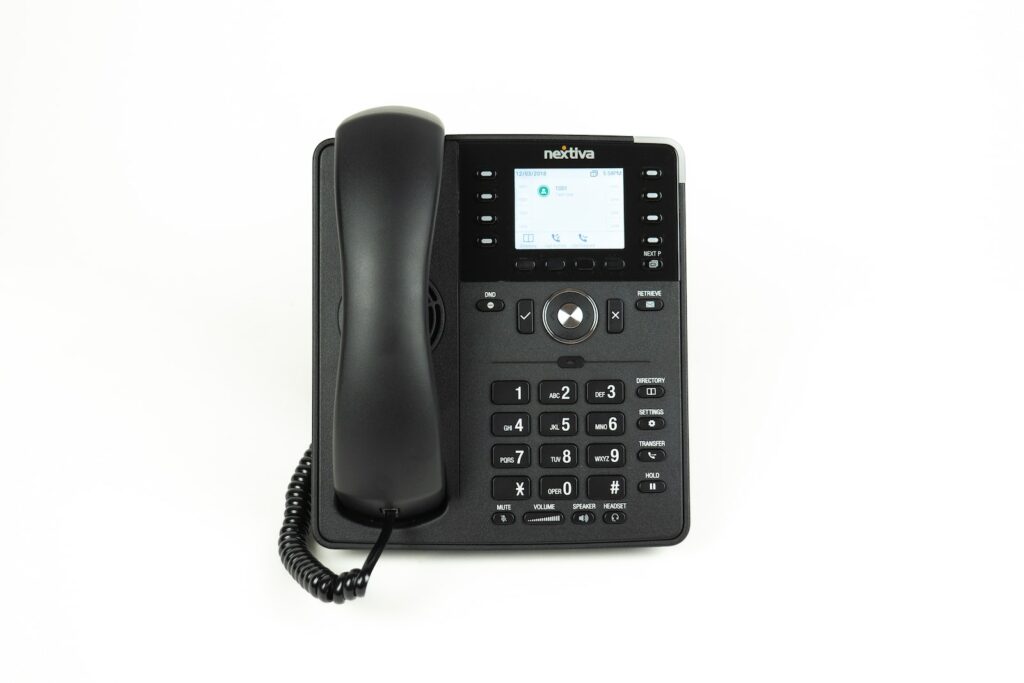Now that employees are splitting time between home and the office, distributed workforces are doing their jobs more flexibly, happily, and efficiently than ever before. According to research from Owl Labs, 62% of employees feel more productive when working remotely. In fact, people love hybrid work so much that 1 in 2 are even willing to take a pay cut of 5% or more just to maintain their flexibility.
Suffice to say, hybrid work is here to stay. But with all it’s benefits, hybrid work still presents plenty of challenges, too. Many businesses are struggling to communicate and collaborate as they would in a typical work environment.
That’s where cloud calling comes into play. But first, let’s dig deeper into the technology that makes cloud calling possible: VoIP.
What is VoIP?
VoIP stands for Voice-over-Internet-Protocol. In simple terms, VoIP allows you to place phone calls over an internet connection instead of a traditional landline.
Here’s how it works: When you make a call, a VoIP system synthesizes your voice signal into smaller data packets and ships them over the internet to an awaiting IP address. If you’re calling a regular telephone, the solution converts the digital signal into a traditional format before reaching the recipient.
Unlike a traditional PSTN (Public Switched Telephone Network)VoIP systems don’t use physical phone lines or cables. This means businesses can deploy a full phone system for both internal and external calls entirely in the cloud.
And the best part? All it takes is an internet connection. That means anyone can use VoIP from any location on any device. That’s the flexibility you just don’t get from a traditional PSTN.
Why VoIP is a must-have solution
The adoption of VoIP for business has been gaining steam for well over a decade. As a matter of fact, cloud calling licenses have nearly doubled from 47 million in 2018 to more than 90 million in 2022.
The U.K. is even planning on shutting down its entire PSTN by the end of 2025. Once its aging infrastructure has sunset, all calls will become digitized through VoIP calling.
Of course, some forward-thinking businesses are ahead of the curve. During the pandemic, when countless organizations shifted toward remote-first policies, several identified cloud calling as a necessary upgrade from costly on-premises solutions. Fueled by the continued use of hybrid work, the global VoIP market will more than double in size to roughly $100 billion in 2032.
So, why VoIP? Well, consider the drawbacks of legacy infrastructure.
Traditional systems are inflexible in terms of adequately supporting a distributed workforce. Worse yet, they’re exceptionally complex and expensive to install, manage, and maintain. As phone systems age, older hardware becomes obsolete, requiring recurring upgrades and potentially costly overhauls.
Benefits of VoIP and cloud calling
VoIP systems aren’t restricted by the on-prem limitations of PSTN and Public Branch Exchange (PBX) systems. By enabling comprehensive cloud calling solutions, VoIP offers a range of advantages, including:
- Reduced costs: According to estimates, cloud calling can help businesses save up to 90% on international calls, 75% on operational costs, and 30% on teleconferencing and phone bills. Why? No fiber optic cables, installation, or maintenance are required.
- Global scalability: VoIP coverage is expanding around the world, allowing you to support a truly global workforce. Because it’s cloud-based, you can add or remove users as your business grows or changes, rolling out new phone lines according to your needs.
- Collaboration: Cloud calling can also deliver cloud-based messaging, video conferencing, and contact center solutions into the same experience. Along with next-level call quality, these advanced features make it easy for all team members to stay connected no matter which device they use.
- Simple set up and maintenance: No physical phone lines or robust hardware is required. All it takes to set up is an internet connection and a web-enabled device, which means new users can be onboarded within minutes. Plus, thanks to minimal on-premises hardware and automated software updates, IT departments don’t have to worry about outdated communications technology.
- Cloud security: One of the biggest challenges of working from home is keeping your business data safe and secure. The leading cloud calling platforms deliver built-in security features like real-time data loss prevention, SOC-2 compliance, and bring-your-own key (BYOK) capabilities to safeguard information and prevent outside intrusion.
SalesHive CRO Explains the Dos and Don’ts of Cold Calling(Opens in a new browser tab)
Future-proofing your hybrid workforce
Simply put, the way we work is evolving. That means your business needs to evolve too.
Thanks to VoIP, it actually can. As a more flexible, feature-rich, and cost-effective solution, cloud calling is poised to carry enterprises into the next phase of hybrid work and empower tomorrow’s businesses to perform at their best. Reilly Nolan, Content Marketing Manager, Webex by Cisco, has more than 10 years of experience across the technology, healthcare, interior design, consumer goods, and fashion industries. Unpacking the human aspect of the product experience is what informs his writing most. In his spare time, Reilly has published and shortlisted fiction in a variety of national literary magazines.
By Reilly Nolan, Content Marketing Manager, Webex by Cisco
